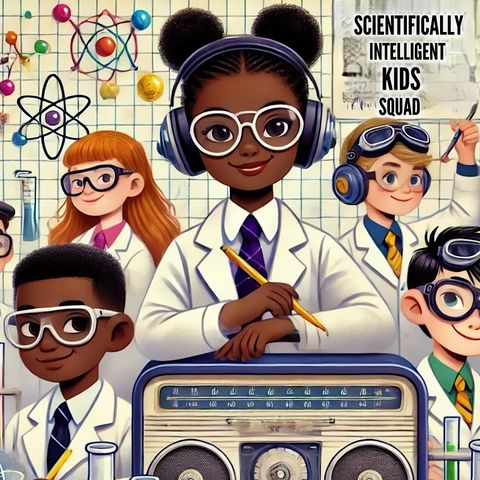Protecting Habitats and Ecosystems

Download and listen anywhere
Download your favorite episodes and enjoy them, wherever you are! Sign up or log in now to access offline listening.
Description
“Today, we’re diving into the wild world of ecosystems, where plants, animals, and even tiny microbes all work together! Imagine a spider web—if one part is broken, the whole thing...
show moreNow, let’s start with the food chain—a vital part of any ecosystem. It’s like a natural conveyor belt where energy moves from plants to animals and then to predators. Plants, also known as producers, are the base of every food chain. They use sunlight to create food through photosynthesis. Then, herbivores, or plant-eaters like rabbits and deer, come in as the primary consumers, munching on these plants to gain energy.
Next, we have the predators, like hawks, wolves, or sharks in ocean ecosystems. They’re the secondary consumers, keeping the population of herbivores in check. Without predators, plant-eaters could overrun the area, stripping away vegetation and throwing the balance off completely. Think of it like a team where each player has a specific role—if one player doesn’t do their part, the whole team struggles.
And let’s not forget about decomposers, like worms, fungi, and bacteria. When plants and animals die, these little helpers break them down, turning them into nutrients that enrich the soil. This process is critical for plant growth and keeps the cycle going. Even the tiniest microbes have a job to do, cleaning up waste and making nutrients available again.
Each ecosystem is a bit different but follows these same basic rules. In a forest, you have tall trees, thick undergrowth, and a diverse range of animals, each playing its part. In a desert, the plants and animals have adapted to survive with little water—like cacti storing water or lizards that only come out at night. Oceans, on the other hand, are teeming with fish, coral reefs, and plankton, which produce a large portion of the Earth’s oxygen.
All these ecosystems are interconnected. For instance, forests help produce oxygen and store carbon, which affects climate patterns that influence deserts and oceans. When one ecosystem is damaged, it sends ripples through others, affecting everything from weather to wildlife migration.
So, as you can see, every creature, plant, and microorganism has a role in this delicate web of life. By protecting ecosystems, we’re protecting the health of our planet and ourselves. We depend on them for clean air, water, food, and even the stable climates we live in. Let’s remember that every small action we take to protect our environment counts, helping these amazing ecosystems thrive for generations to come!
And now, for a fun experiment you can try at home! Let’s make a mini-ecosystem in a jar! All you need is a clear jar, some soil, a few small plants, and a little water. Place a layer of soil at the bottom, plant a few small plants, and add just a tiny bit of water—don’t overdo it! Close the jar and place it near sunlight, then watch as a mini ecosystem comes to life! Over time, you’ll see how water, light, and plants interact. The plants will create oxygen, the soil will help them grow, and the moisture will recycle as it condenses on the glass. It’s a simple way to see how ecosystems are self-sustaining and how everything is connected!”
Information
| Author | SendMe Radio |
| Organization | SendMe Radio |
| Website | - |
| Tags |
-
|
Copyright 2024 - Spreaker Inc. an iHeartMedia Company

Comments